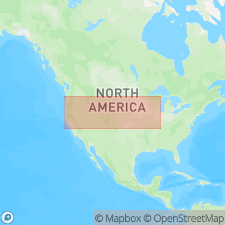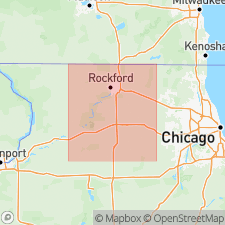
- Usage in publication:
-
- Oregon Till Member
- Modifications:
-
- Overview
- AAPG geologic province:
-
- Wisconsin arch
Summary:
A fining downward succession in the diamicton now recognized as the Oregon Till Member of the Glasford Formation is called the silty facies when the sand content drops below 40%. The Oregon and Oregon silty facies are distinct mappable units and the silty facies is generally mapped east of the Oregon Till Member. The silty facies was informally named the Creston till by Berg and others (1984). Overlies the Fairdale Till Member of the Glasford in a stratigraphic relationship similar to that between the Capron Till Member and the Argyle Till Member; underlies the Esmond Till Member of the Glasford.
Source: GNU records (USGS DDS-6; Reston GNULEX).

- Usage in publication:
-
- Oregon Till Member
- Modifications:
-
- Named
- Dominant lithology:
-
- Till
- AAPG geologic province:
-
- Wisconsin arch
Summary:
The recognition that the Esmond Till is a member of the Glasford Formation (Illinoian) rather than of the Wedron Formation (Wisconsinan), has left three unnamed till members below the Esmond. The upper till is here named the Oregon Till Member of the Glasford Formation for its widespread occurrence near Oregon in Ogle County, and in Boone, Winnebago, and Lee Counties, IL. It consists of a pinkish-brown loam to sandy loam diamicton. Its siltier fining downward component is referred to as the Oregon Till Member silty facies. Overlies the Fairdale Till Member and underlies the Esmond Till Member of the Glasford. Replaces the Argyle Till Member of the Winnebago Formation in Winnebago, Ogle, and Lee Counties. Thickness is 1 m. Age is Pleistocene (Illinoian).
Source: GNU records (USGS DDS-6; Reston GNULEX).
For more information, please contact Nancy Stamm, Geologic Names Committee Secretary.
Asterisk (*) indicates published by U.S. Geological Survey authors.
"No current usage" (†) implies that a name has been abandoned or has fallen into disuse. Former usage and, if known, replacement name given in parentheses ( ).
Slash (/) indicates name conflicts with nomenclatural guidelines (CSN, 1933; ACSN, 1961, 1970; NACSN, 1983, 2005, 2021). May be explained within brackets ([ ]).

